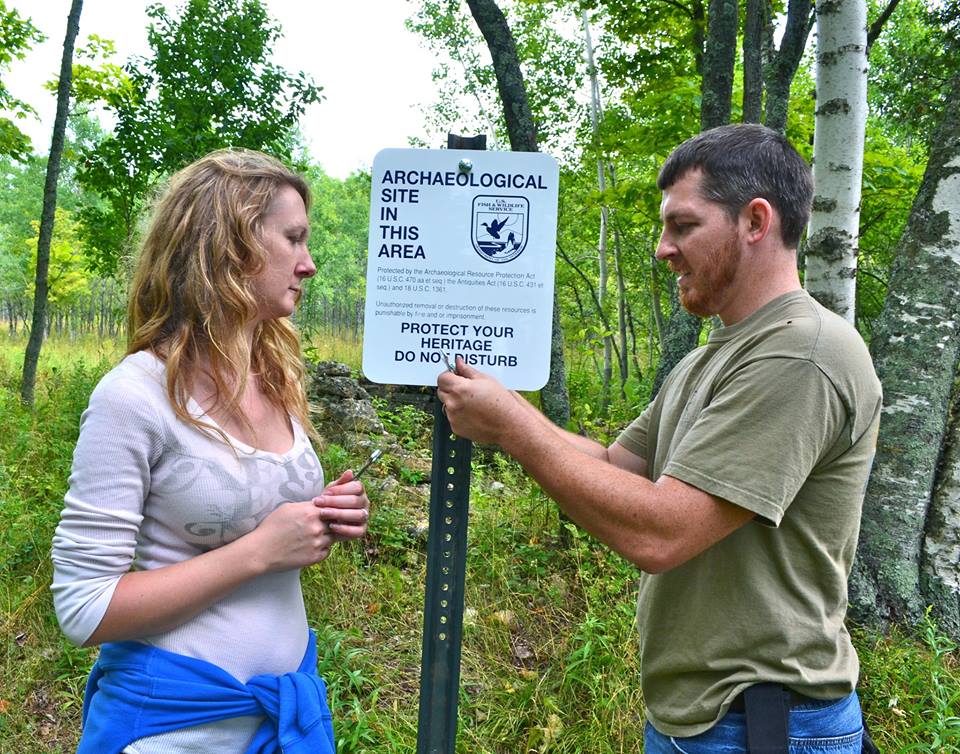In honor of the FOPPI Volunteers Annual Meeting this coming Saturday on Plum Island, I thought I would share a bit on the archeological dig conducted there last month.

As the US Fish and Wildlife Service continues the process to open Plum to the public, it becomes necessary to review/research sites which could provide information about what life was like there in previous times. James Myster, regional archaeologist for the US Fish and Wildlife Service Midwest Region put together this adventure. James' region covers eight states so it was pretty nifty to think he could allocate this time to such a project.
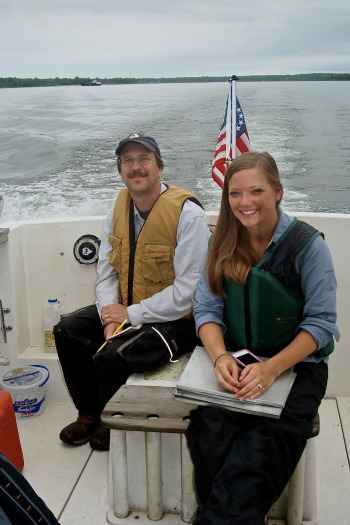
One of the first issues was just getting to Plum on a regular basis for two weeks. Here's Archeologist James and Student Katie on the way to work one morning. James indicated this was the first time in his career he had to commute by boat to the site.
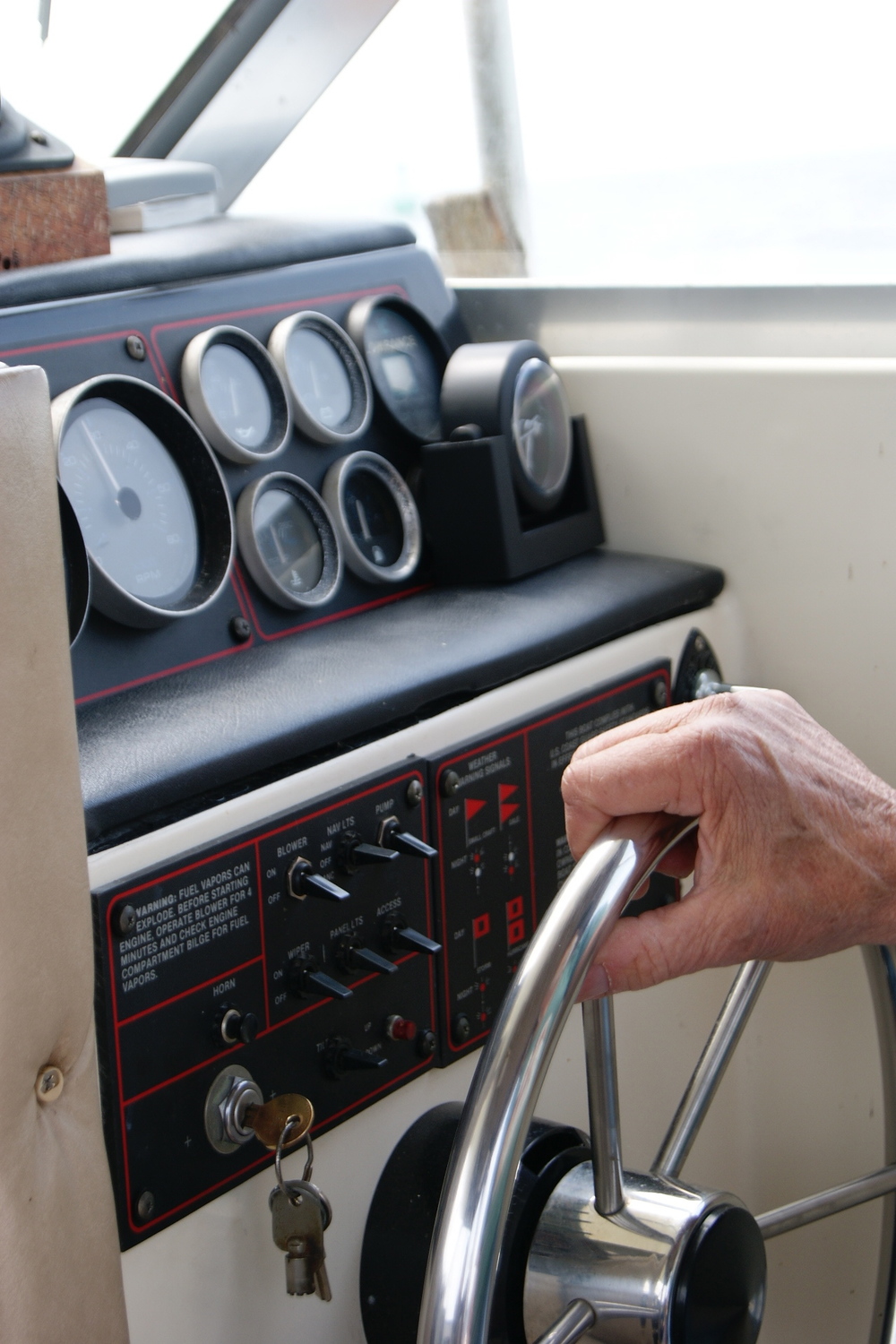
Yes, this was tough work for Lew and Mockingbird...33 trips in all were made..at least two in the morning and two in the evening.
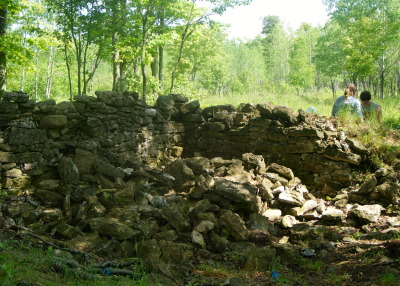
The site of the original lighthouse - opened in 1849 and abandoned in 1858 - was a perfect opportunity to let some students get hands-on experience. That timeline is significant, according to James, because it delineates a definite period of time - and a short period a that - when the site was occupied... another help in seeing this project come together as a college course.
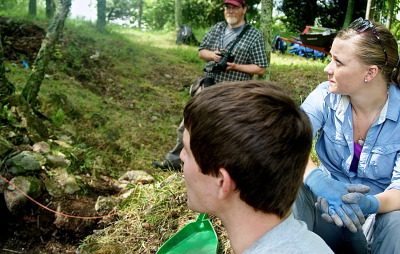
Longtime friend, Brian Hoffman, Hamline University Associate Anthropology Professor, wanted to give a group of students this chance. So for the first time they worked together in this win/win situation. Here's Brian in the background...hard to get a photo of him as he was usually the one taking the pictures!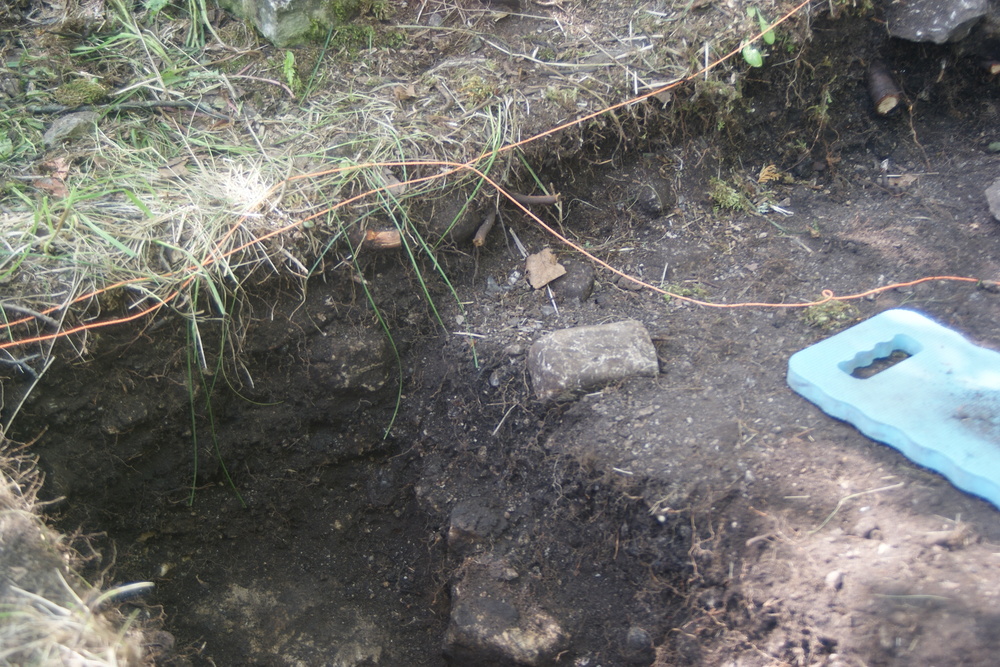 Careful excavation revealed more of the old stone walls and indicated where the doorways might have been. While there is no known definitive illustration of exactly how the building appeared, the work helped dispel notions of how it was not constructed. (Steve Waldron Photo)
Careful excavation revealed more of the old stone walls and indicated where the doorways might have been. While there is no known definitive illustration of exactly how the building appeared, the work helped dispel notions of how it was not constructed. (Steve Waldron Photo)
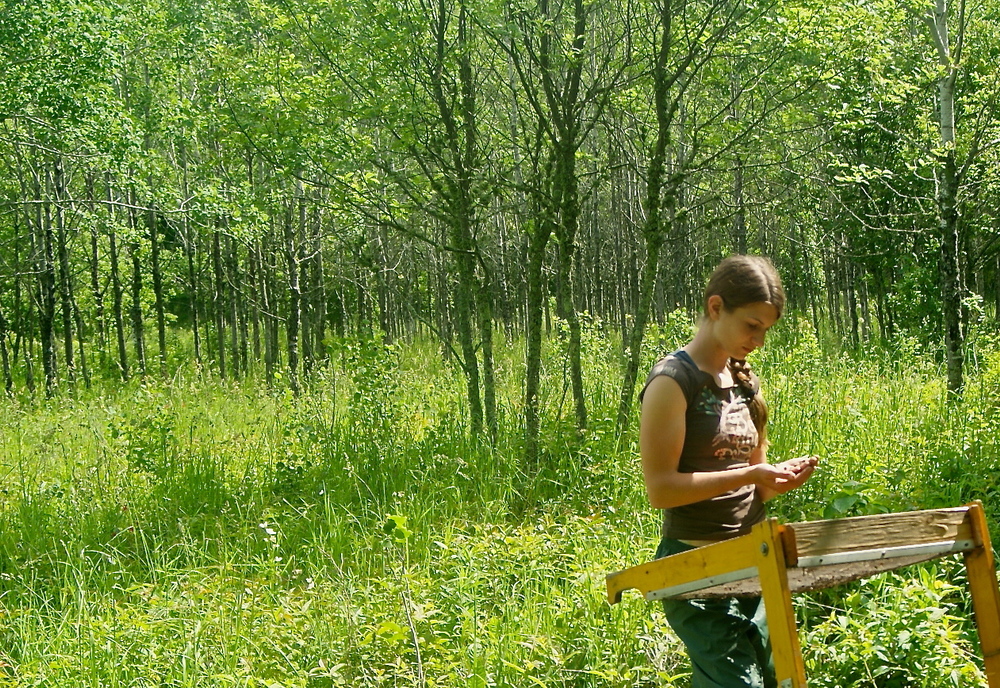 A team of four girls and two boys, mostly incoming Seniors, worked eight to ten hour days in this field experience, carefully digging around the foundation and sifting the results.
A team of four girls and two boys, mostly incoming Seniors, worked eight to ten hour days in this field experience, carefully digging around the foundation and sifting the results.
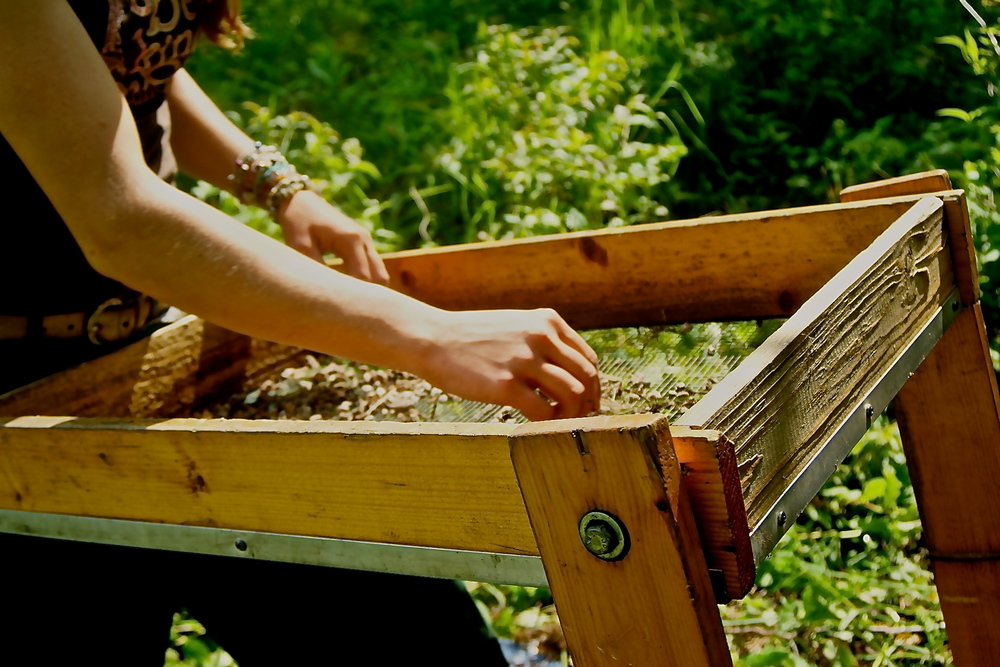 Tedious perhaps...hot...sticky...dirty...not to mention buggy? Yes, it was.
Tedious perhaps...hot...sticky...dirty...not to mention buggy? Yes, it was.
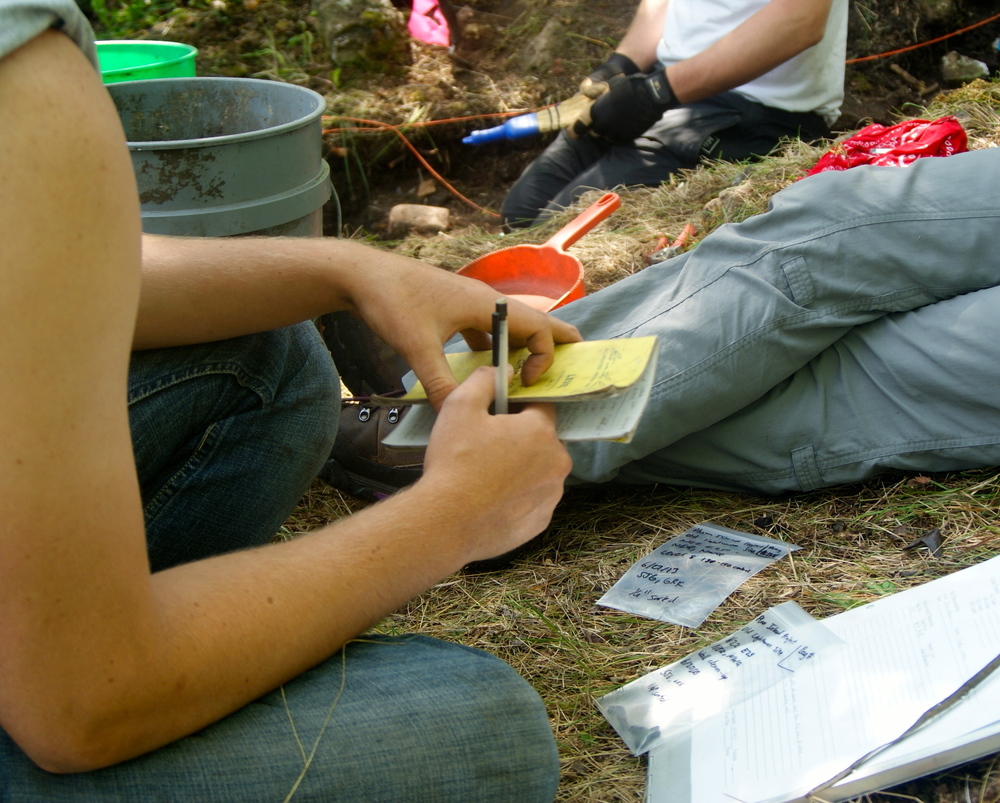 However, everyone reported it was worth it... Learning the process of unearthing a ruin in real time...keeping records & cataloging an inventory.
However, everyone reported it was worth it... Learning the process of unearthing a ruin in real time...keeping records & cataloging an inventory.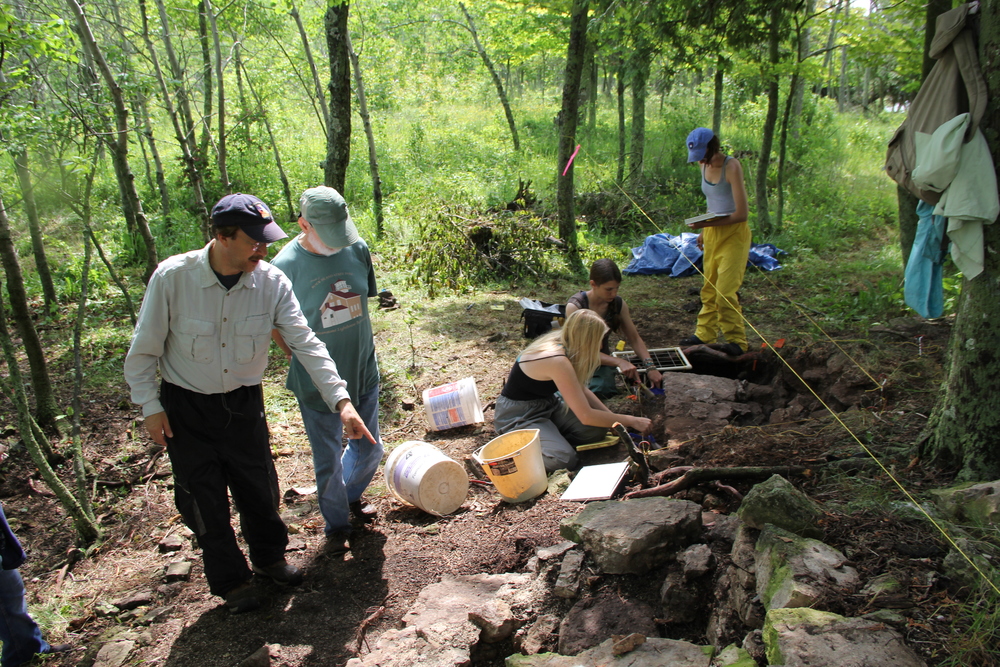 Results of this work will be used in signage and informational displays...interesting to see that note taking by hand continues in fieldwork. (Steve Waldron Photo)
Results of this work will be used in signage and informational displays...interesting to see that note taking by hand continues in fieldwork. (Steve Waldron Photo)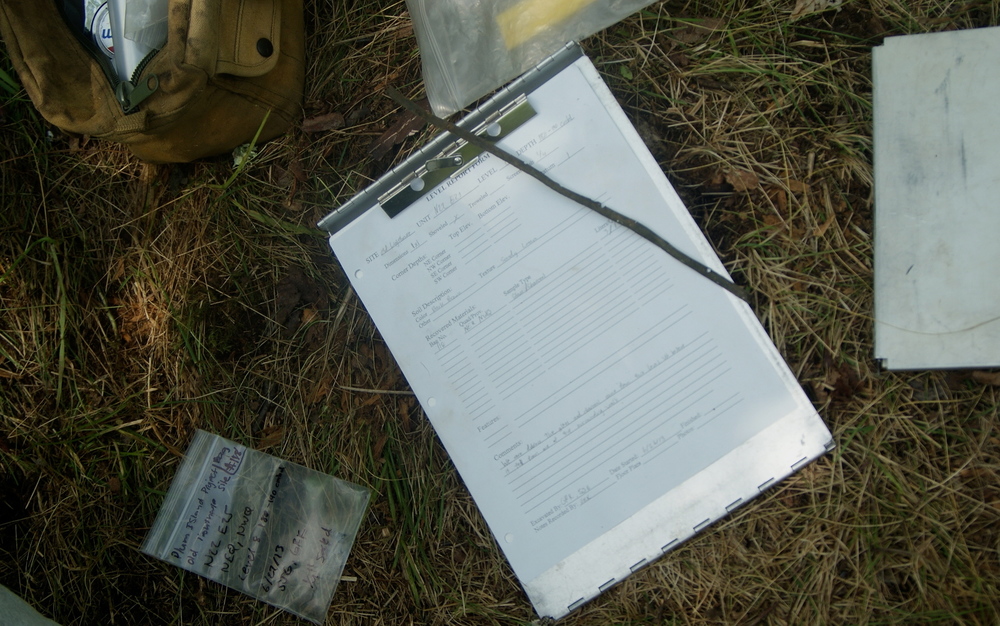 Laptops would then be used to gather further information from state, federal, and other historical sites.
Laptops would then be used to gather further information from state, federal, and other historical sites.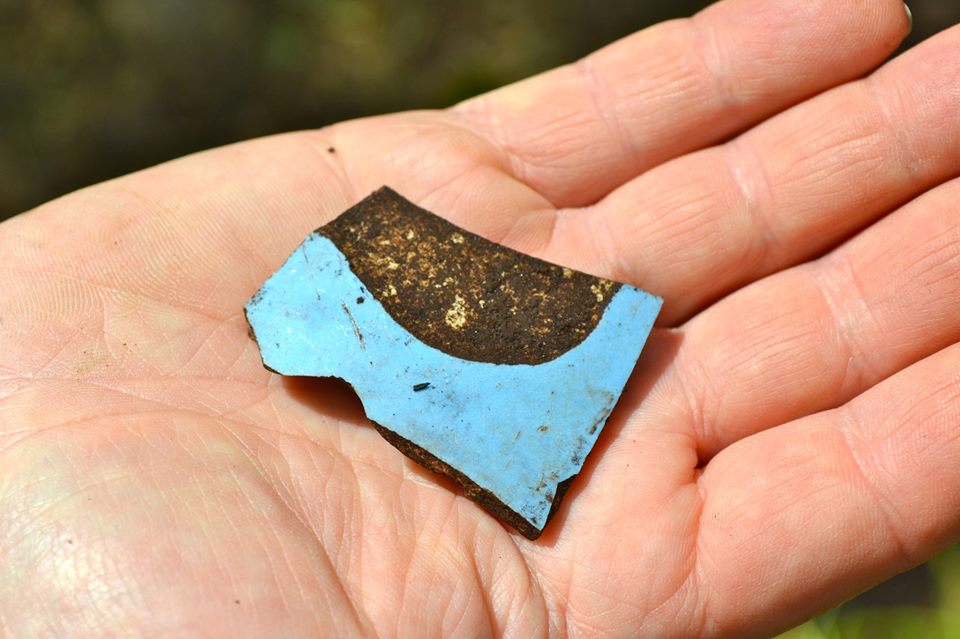 Artifacts such as fragments of pottery were found...buttons too.(Tim Sweet Photo) At the end of this phase, any artifacts discovered were then transported back to the Hamline U. campus in St. Paul, MN where the students were to continue this Summer course in the lab there with Brian.
Artifacts such as fragments of pottery were found...buttons too.(Tim Sweet Photo) At the end of this phase, any artifacts discovered were then transported back to the Hamline U. campus in St. Paul, MN where the students were to continue this Summer course in the lab there with Brian.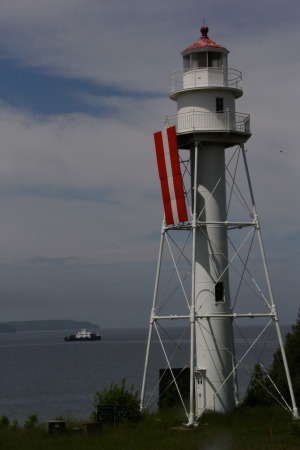 Here's the current lighthouse...not as poetic perhaps but a better location. (Steve Waldron Photo)
Here's the current lighthouse...not as poetic perhaps but a better location. (Steve Waldron Photo)
Plum amazing? Yes! This is just one piece in the puzzle to be completed so that Plum can be accessible. To see the variety of public and private agencies and organizations working together to ready Plum Island for public access some day is amazing. A review of this activity will be shared at the FOPPI Meeting this coming Saturday.
Quoting Carol Thompson's article in the July 5th Door County Peninsula Pulse: "It may be next summer or the one after that but someday Plum Island will be open to the public."
Watch for future events to be scheduled which will benefit the Friends of Plum and Pilot Island in this effort.
Coming Up:
Wednesday -
Pioneer Day Family Activity: Candle Making; Hay Wagon Rides, too! - Farm Museum -1:00pm
Thursday -
German Exchange Student Celine Kammin Piano Concert - Historic Island Dairy - 7:30pm - admission is free
Friday -
Washington Island Art Association presents: "Small Frame - Big Art Show" Opening Reception -
Red Cup Coffee Shop - 4:30pm
11th Annual Folk Festival - Out at the Red Barn - 7:30pm
Saturday -
Rec Run! - Starting at the Rec Center - 10:00am
Caravan Gypsy Swing Ensemble - TPAC - 7:30pm
Sunday -
"Free Spirits, We Cousins Four" Opening Reception - Art and Nature Center - 2:00pm
It's a busy time! Have a great week!
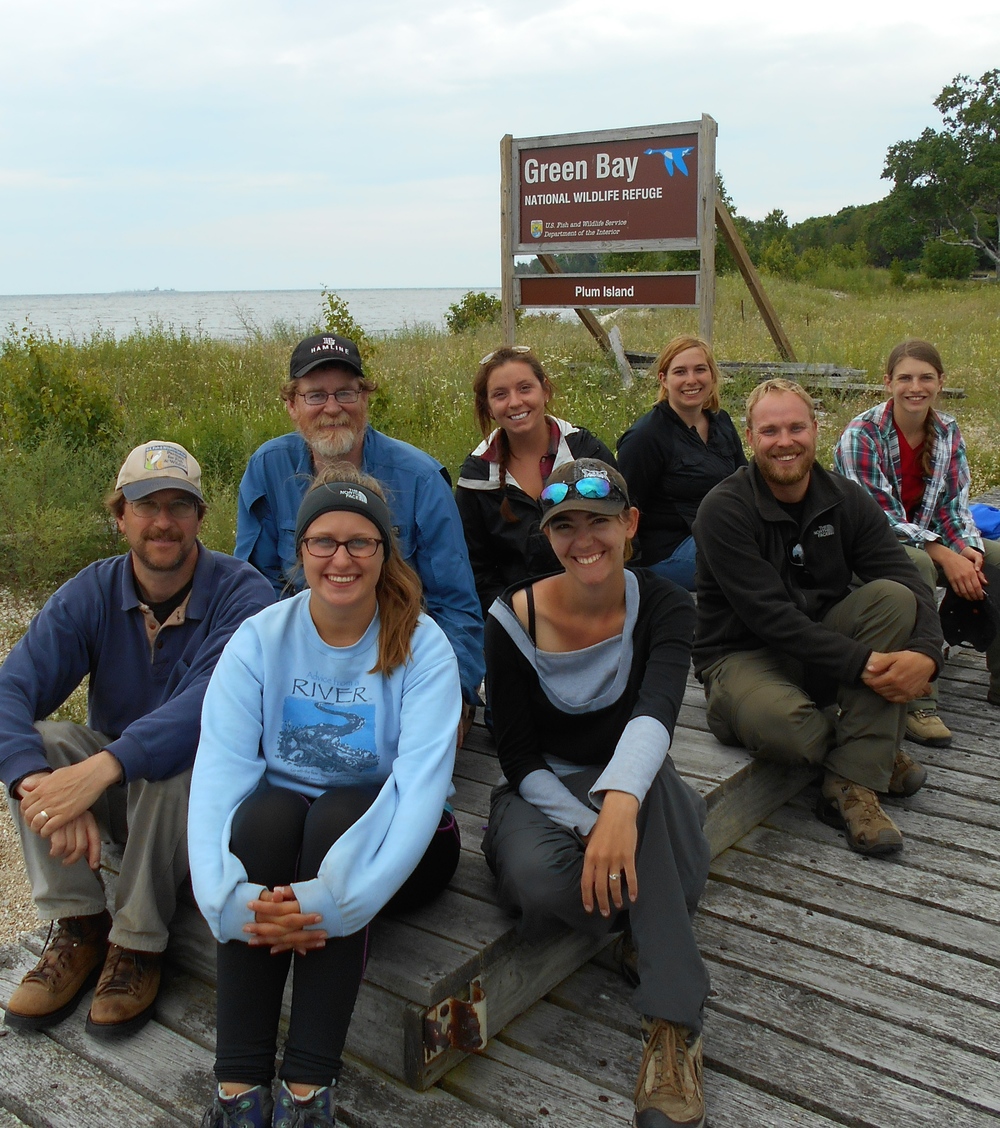
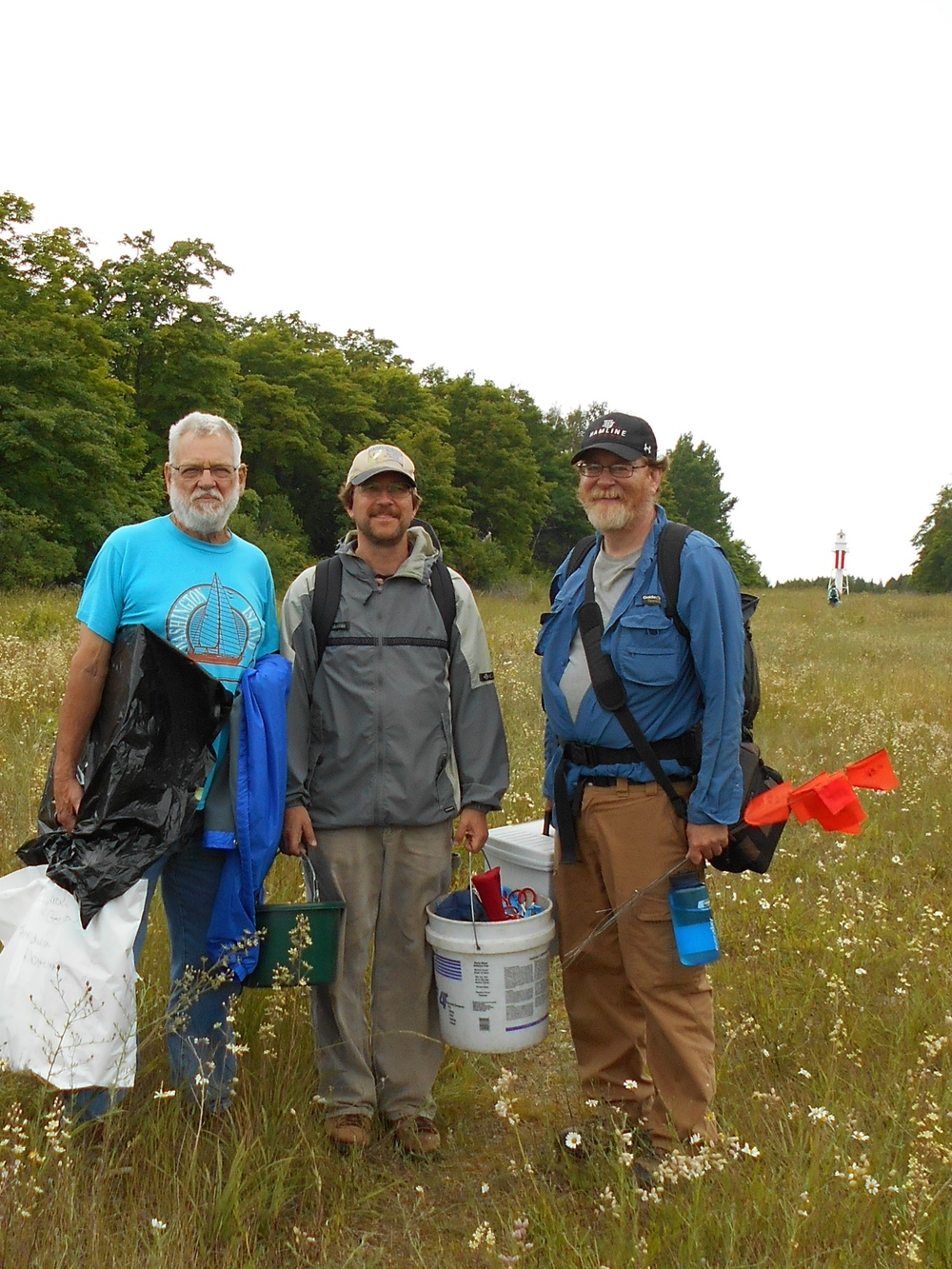

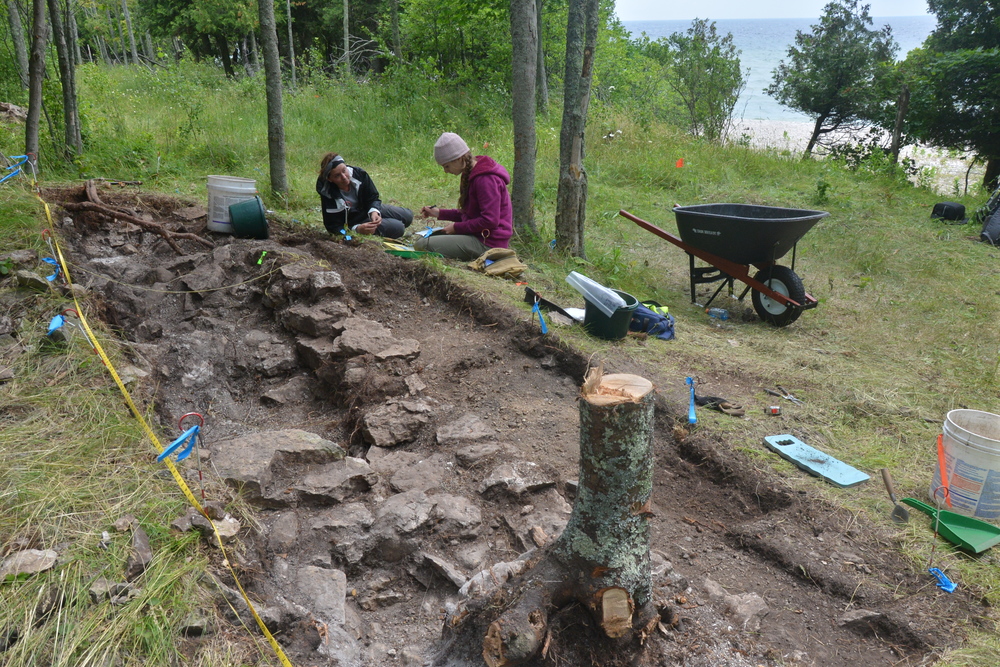
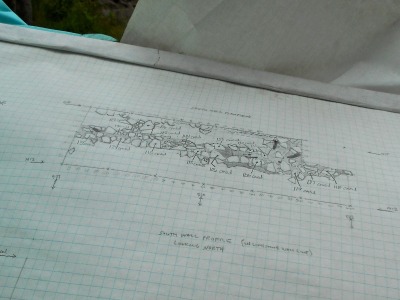


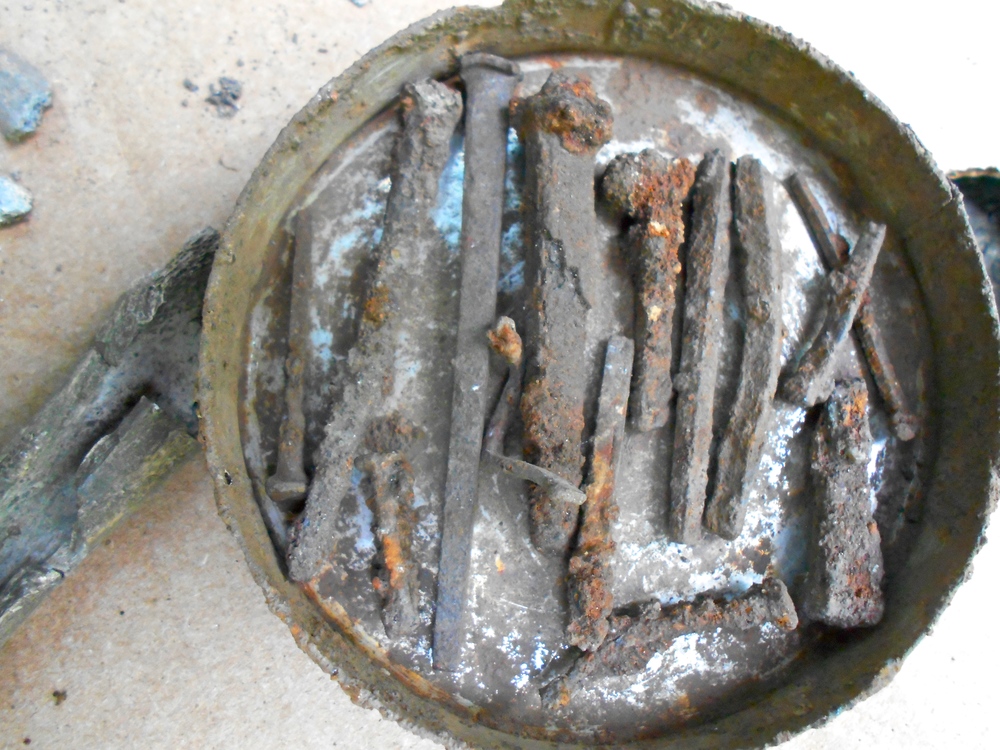
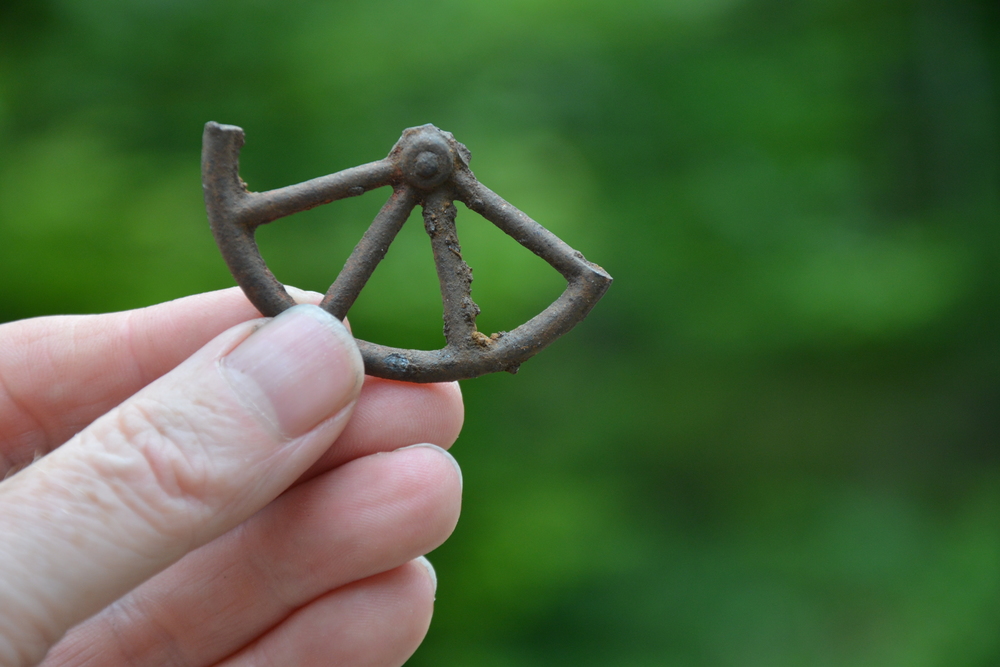
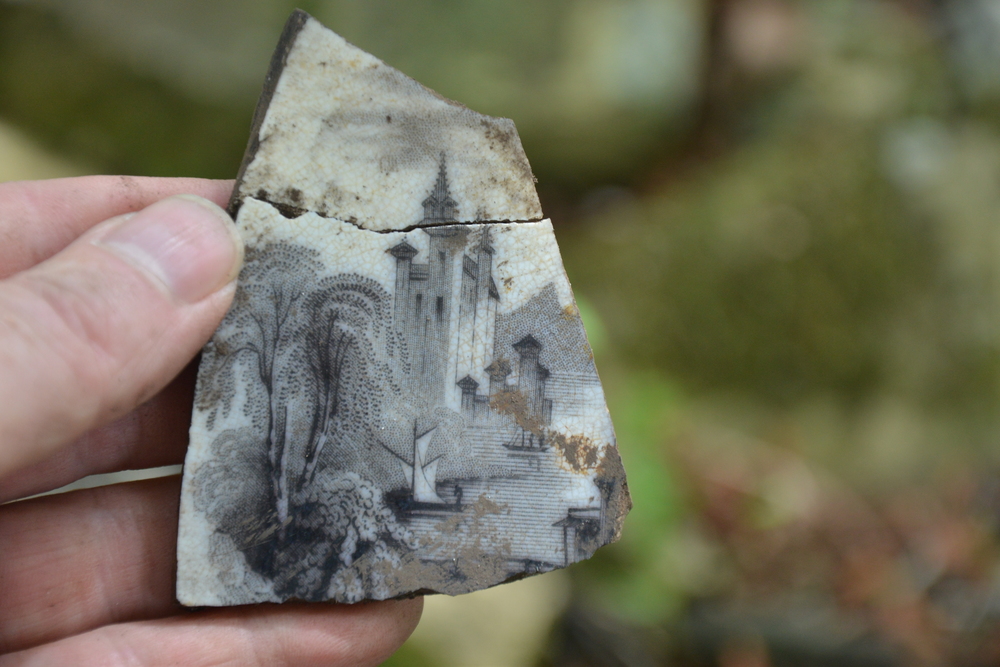 Various pieces of china turned up. Makes one wonder what hands held this "dish" ... What food was served on it ... what conversations went on as meals were prepared and consumed. (Brian Hoffman Photo)
Various pieces of china turned up. Makes one wonder what hands held this "dish" ... What food was served on it ... what conversations went on as meals were prepared and consumed. (Brian Hoffman Photo) Not all discoveries were still. This critter was found on a tree stump in the midst of digging! After fact checking with nature minded folks.* ANC Naturalist Steve Waldron identified it as a red newt ... it's interesting to think that a similar creature might have been discovered by a lighthouse keeper's child much like today's youngsters who bring their finds - snakes, toads, etc every summer to the Art & Nature Center...such fun to hypothesize! (Becky Strike Photo)
Not all discoveries were still. This critter was found on a tree stump in the midst of digging! After fact checking with nature minded folks.* ANC Naturalist Steve Waldron identified it as a red newt ... it's interesting to think that a similar creature might have been discovered by a lighthouse keeper's child much like today's youngsters who bring their finds - snakes, toads, etc every summer to the Art & Nature Center...such fun to hypothesize! (Becky Strike Photo)